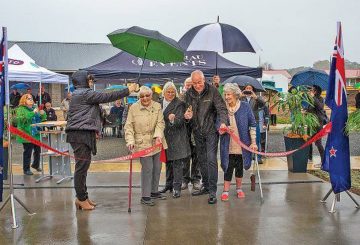ニュージーランド最大のバターカップスカッシュ(カボチャの品種)生産者の一人が、植物由来のミルクを開発し、アジアの代替タンパク質市場に参入しました。
カボチャミルクは、ホークスベイの生産者であるシェーン・ニューマン氏と、世界初のアボカドミルクを開発した日本の有名シェフである野村祥恵のコラボレーションで生まれました。
かぼちゃは日本のカボチャの一種で、日本や東アジアの食卓に欠かせない食材であり、ニュージーランドは日本や韓国へのかぼちゃの最大の輸出国のひとつです。
第一次産業省は、日本、韓国、中国をはじめとする世界の消費者にアピールする保存可能なカボチャミルクのレシピを考案、製造、販売するKabocha Milk Coの取り組みを支援するために、「Sustainable Food and Fibre Futures」ファンドを通じて9万5,000ドル以上を拠出しました。
ニューマン氏は、彼の家族が40年以上にわたって生鮮園芸と輸出事業を行ってきたことで確立した強力な流通・小売チャネルを活用することで、カボチャミルクは約5000のアジアの小売店、スーパーマーケット、コンビニエンスストアのチェーン店などの大規模な流通ネットワークにアクセスすることができたと述べています。
「私たちのカボチャミルクは、輸出されていないtag-3フルーツ(品質には問題ない最低グレード)を使用しており、通常であれば廃棄されてしまう農産物から、高価値で持続可能な輸出可能な製品を生み出しています」とニューマン氏は言います。
「ニュージーランドのかぼちゃ産業に新たな機会をもたらすことができ、非常に満足しています。」
ニューマン氏によると、すべての製品が海外に輸出されるが、地元の農家、地元の研究開発、地元の製造業者、包装業者、国内の物流会社を利用しているという。
かぼちゃがニュージーランドで栽培・生産されているというストーリーは、ブランディングの重要な要素だと彼は語りました。
「ニュージーランドの生産者は、すでに消費者から非常に高い信頼を得ているので、マーケティングでは製品のオリジンストーリーを強調しています」とニューマン氏は言います。
「市場からのフィードバックは、製品のコンセプトから味、ブランドまで、非常にポジティブなものばかりです。」
カボチャミルクは、いつでも飲める「牛乳の代替品」として、家族の食生活に健康的な栄養素を簡単に、おいしく取り入れることができる商品です。
MPIの投資プログラム・ディレクターであるスティーブン・ペンノ(Steve Penno)氏は、Kabocha Milk Coは、ニュージーランドの食品部門で貴重な雇用機会を提供しており、会社の拡大に伴い、こうした機会も増えていくだろうと述べています。
また、余剰生産物から生産者にとってより大きな収穫と価値を引き出す革新的な方法でもあります。現在、ニュージーランドで栽培されているかぼちゃの10~15%はストックフードとして使用されています。
























































-helped-regain-her-strength-and-balance-using-Nymbl-after-a-fall.-660x440.jpg)


